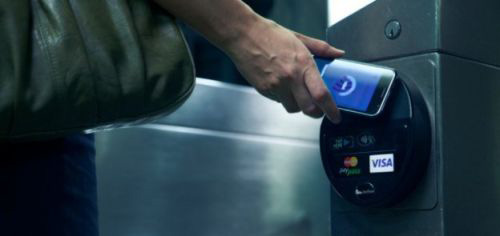
Near Field Communication is coming to your smart phone this fall.
What does that mean to you?
Among other things, NFC-enabled devices (think smart phones or tablets) will enable the user to make mobile payments (have a look at the VISA video below), replace your passport, with one swipe open your home, car or hotel door, allow you to buy your theatre tickets online, replace the bracelet you have to wear when you go to the hospital, demystify your prescriptions when you’re at the pharmacy — and all that’s just for a start.
So, VISA is about to create and implement an effective, secure digital wallet service that’ll make all the above payment innovations real, set to arrive in a digital device near you at some point this autumn.
VISA’s idea is to let you store your VISA accounts, non-VISA accounts and even online payment services like PayPal into one digital wallet.
This way, you can pay for goods online with this do-everything wallet, with one account rather than various cards and different accounts allowing you, of course, to customize which cards you want, thereby simplifying how you pay for the goods you purchase.
Google has also announced a digital wallet, arriving first on Android phones, but due to expand onto all smart phones later this autumn.
A chip inside new Android phones — for now, only one model has it — will allow shoppers to wave their devices in front of a reader to pay for clothes and food at the mall or grocery.
Responding to privacy issues, Google said it will not have access to users’ financial information or purchase history.
Google’s electronic wallet will launch over the summer, with trials beginning in American cities on either coast. Users will need to download the Google Wallet application to begin using the service. Security will be paramount: Google said the chip cannot be accessed by passersby or by malicious software applications designed to steal information.
Users will need a PIN to access the app, and financial data will be stored on a tamper-resistant chip isolated from the phone’s hardware and software. At the point of purchase, the transmitter sends a unique, dynamic account number to verify the transaction.
“At the end of the day, it’s the same as a card,” says MasterCard spokeswoman Joanne Trout. “If there are fraudulent purchases, customers have zero liability.”
The success of MasterCard’s PayPass system — which allows shoppers to simply tap their cards on a reader rather than swipe — shows there is demand for “contactless” payments.
“There will be demand for this technology as long as there are enough retailers and enough phones,” Google announced upon introduction of the digital wallet concept.